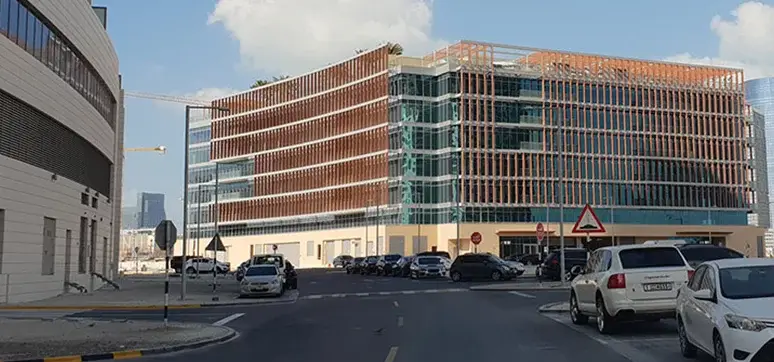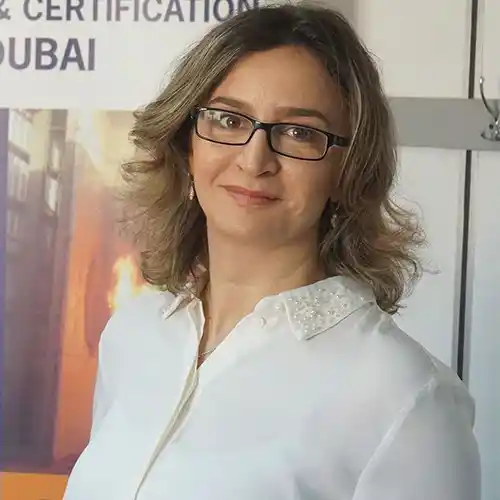What are the key parameters you while designing a façade?
Designing a façade starts at the concept stage where we study the project’s function, aesthetics, location and surroundings. Those aspects comprise the key parameters, which we consider throughout the design process. So, if we consider the function, for example, we notice that designing a façade for residential, office or mixed use has a great impact on the project image and façade. This is mixed with the aesthetic intent which is an important driver. So, while many projects tend to blend in with the surrounding fabric, other buildings, especially the public ones like museums or airports compete to be unique and stand out.
In addition to visual, the aesthetic design intent, the location and the surroundings will affect the technical aspects we consider such as the climatic treatments, noise reduction and privacy requirements. This guides us to map out all the possibilities and limitations, and then we work closely with the architect during schematic and detailed design to translate them into a set of design and performance requirements that will guide us to choose suitable systems and materials.
What are the difficulties while designing a façade?
Coming up with the best solution at the most feasible price is always a challenge while designing a façade. With the rise of material prices and the cost of labour, we are always looking for smart designs with high quality. The lack of clarity in design intent is also a difficulty that we sometimes face. Many decisions are made throughout the project based on the interaction between the façade consultant and the architect and those decisions result in having the final design of the façade. Therefore, the process in which the project is running is just as important as the technical aspects and capabilities of the team.
The industry also faces the challenge of adapting to new façade materials that are being developed. Artificial materials may provide a more lightweight and cheaper solution, however, they provide some uncertainty due to the lack of a proven track record. The design team must study these materials carefully and prescribe the correct testing to ensure the material can be used. The availability of many tools such as BIM based design has facilitated this process and made it more integrated into our experience.
What are the latest trends in curtain wall design?
We have noticed many trends that came up throughout the years in the design of curtain walls from simple straight and vertical curtain walls with repetitive modules to complicated shapes and designs. While the trends in the previous façades were related to structural challenges such as long spans and frameless façades, we have recently seen different trends which are related to more sustainable and green façades.
Many of the buildings we work on have new nontraditional materials integrated into curtain walls to add colour, texture and interest. The latest trend deviates from the typical aluminium and glass look to adopt other materials such as coloured concrete panels, ceramic panels, terracotta and GRC. This has resulted in more interesting coloured and textured panels that are used as spandrel infills or shading projections to façades.
Is laboratory testing required for each project?
Laboratory testing validates the design of the curtain wall system and makes sure it complies with the project specification. It is also referred to as preconstruction testing because you get the full benefit of it if it is conducted prior to installation on site. Many errors are avoided at the site because of laboratory testing and verification prior to starting installation at the site. Therefore, it is better if such discrepancies are discovered at an early stage before the system is installed wrongly on site.
Many systems are tested and verified, however, projects are not all the same and each curtain wall is unique in its design. In each laboratory test we conduct, a new lesson is learned that benefits the project and its team. As façade consultants, we review any modifications that are applied during the preconstruction testing and make sure they are implemented at the site by inspecting the installed work periodically.
What is the best timing to test the façade at a site?

Site testing is also an important tool that enables us to verify that the design team is installing the system at the same workmanship level as installed during the preconstruction test. It also confirms that any modifications applied during the preconstruction test are implemented correctly at the site. We usually recommend conducting site testing early during the installation phase and if possible periodically throughout the project.
While preconstruction testing can include a large array of tests, site testing is limited to few tests that can be implemented on site. So, for example, the building movement tests cannot be implemented at the site since it is not possible to move the slab edge at the site. Also, the dynamic water test is hard to implement on site due to the difficulty of moving the airplane engine and propeller which generate the wind during the laboratory test.
New site tests are introduced to verify compliance with green building regulations such as the whole building air infiltration test. This test enables us to measure air leakage throughout the whole façade of the building. Of course, the lower the leakage the more efficient the building envelope is considered.
How do you ensure the façade is built properly and that quality is kept consistent throughout the construction process?
I believe a good project can only be delivered in case we have the proper specification in place at the design stage and a comprehensive tender package that explains the design intent in full detail, both aesthetically and technically. The façade specialist should specify the right materials and systems for the right application, climatic condition and location. This is the most important step that will guide all parties throughout the construction stage.
Good quality should be the responsibility of all parties at the site. The contractor should have a robust quality control plan to monitor all stages of fabrication and installation and the consultant should make sure that such a plan is actually in place and is strictly implemented.
In your opinion, what are the most common factors responsible for the failure of curtain wall systems?
Cutting costs without proper value engineering is the mother of all mistakes. There should be a façade specialist on board from the beginning to provide the right advice in case the project budget is limited. Proceeding with a lower budget for the full package that is not studied properly results in getting bad quality systems and installation. In many cases, the results of such a setup end up in a malfunctioned façade that costs more than the original price to fix. A façade consultant is able to guide the project team through the design and execution of the façade.
During the design stage, the façade’s performance for structural, weather, acoustic, thermal and fire safety must be considered. The project documents must provide a clear picture of what is desired in order for the contractor’s to execute the project properly. During the execution of the project, the façade consultant will review the contractor’s shop drawings and calculations as well as inspecting the field installation. While designing a façade, a successful project relies on a chain of design, tendering, manufacturing, installation and quality control. A weak point along this process can result in the façade system failing.
What are your expectations for future façades?
We are living in a very creative and interesting era in terms of construction. The need for speed is apparent everywhere and I think that will reflect on many aspects including construction. Revolutionising the sources of power can result in less expensive small modules that can be tapped into robotically to speed build many prototypes. This has been achieved already through 3D printing and I hope to see new similar innovations that involve a faster design and building process.
The construction industry should also consider to be more harmonised with the environment and try to contribute positively to climatic change. The way we design and occupy our building should be thought of in further depth to try to make this world a better place for future generations.
What developments are there in the Middle East market?
Throughout the last twenty years, I have seen the Middle East market develop into a high quality market that follows best practices. However, I believe there is still some room for improvement, particularly in the way that projects are managed. One of the biggest challenges at the moment is to satisfy the demand in the market for affordable housing without compromising quality. Creating a sustainable market where all parties can contribute to reach this goal is, quite challenging, but with a lot of hard work, I believe this can be achieved.














